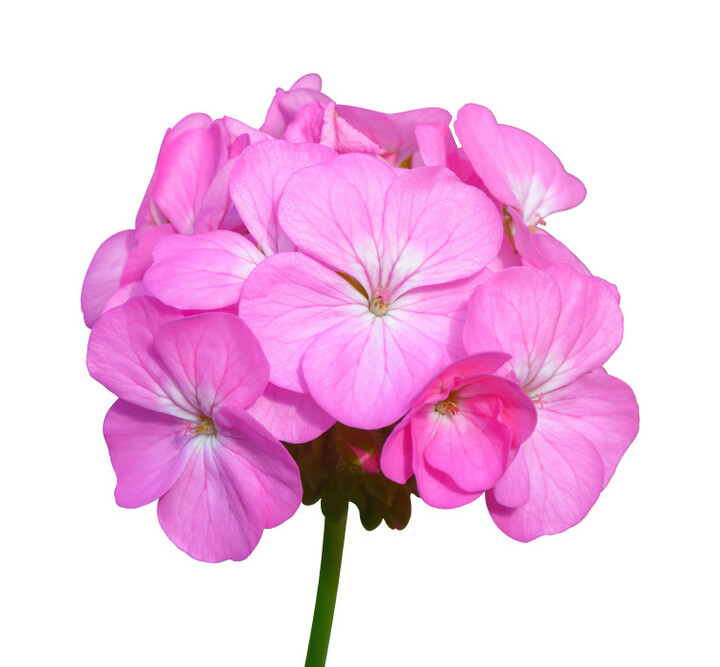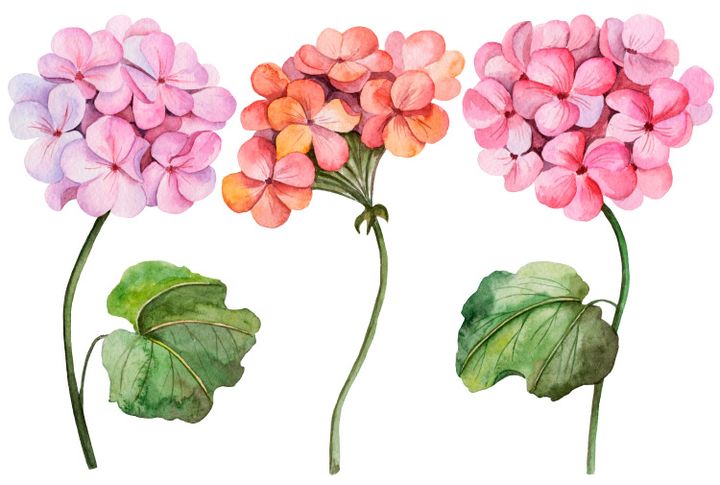
Geraniums are a favourite of green-fingered connoisseurs.
They are low maintenance, vibrant in hue, easy to grow, and boast a great fragrance.
Here we’ve listed a few tips and tricks, guaranteed to make growing geraniums in your own home and garden a great deal easier…
Geranium – Care Guide

The basics
Geraniums are extremely easy to grow; they’re also very hardy and reliable! This makes them a popular choice for beginner gardeners and also, those with little time on their hands. They boast a series of showy flowers, which are very versatile.
They can be used in borders, as hanging plants, as bedding plants, and container plants. The majority of geranium varieties thrive best in full sunlight.
They can survive with little water and will grow in just about any type of soil. These plants are however prone to root rot, which means you must water them only when the soil is completely dry.
To promote healthy, strong roots, fertilising is highly recommended.
If growing geraniums in containers, it’s important to remember that these plants will require a little more fertiliser than those grown outdoors. For best results, deadhead your plants on a regular basis to encourage fuller and more regular blooms.
Planting
Although an outdoor plant, geraniums are often moved indoors over the winter months. Some gardeners will even keep these plants indoors all year round! Provided they have enough light, they’ll bloom almost anywhere!
When choosing geraniums, it’s important to pay close attention to size and colour.
Pick a plant with healthy leaves and sturdy stems without discolouration.
It’s also wise to check the plant for pests, which if left to thrive, can cause a detrimental effect to your geranium’s wellbeing.
When planting, place geraniums in pots with drainage holes, as this will deter root rot. If placing a saucer under the pot, fill it with pebbles. It’s important to use a soil-less potting mixture when planting in containers.
To ensure maximum bloom, place the plants in a location that receives between four and six hours of sunlight per day.
Caring for geraniums
Water thoroughly but always allow the soil to dry between watering. When the winter months arrive, you’ll find the plant requires less water. Despite this, it’s still important to not allow the roots to dry out.
To promote a full flower, it’s always a good idea to remove dead flowers, as this will encourage new growth. You can also pinch the stems to increase the volume of the plant.
During active growth, it’s wise to add a fertiliser to the soil every two weeks. For best results, opt for a half strength, water-soluble fertiliser. You won’t need to repeat the process in the winter months. When spring arrives, geraniums can be re-potted when required.

Overwintering geraniums
Geraniums that have spent the entirety of the summer months outside can (provided they receive adequate sunlight) be brought indoors during the winter months. This is especially the case in colder climates, where the temperature can drop dramatically.
Without sun, buds won’t be stimulated and the plant will suffer
Before the first signs of frost, cut the stems back using a clean, sharp knife. These should measure between six and eight inches in size and shouldn’t be weighed down by too many leaves. It’s a good idea to save a few stems as cuttings to plant; this is a fail-safe way to multiply your plants.
When transplanting, choose a pot that is only slightly larger than the plant itself and fill with regular potting soil.
For the first week, place the plants in the shade before moving them to a sunny spot. At this stage, sunlight is extremely important and geraniums will require as much sun as possible.
This particular specie of plant thrives with the right temperatures. For best results, night temperatures should be between 10°C to 16°C. As long as the plant is kept relatively dry, geraniums can survive temperature drops of 0°C and heights of 27°C.
As soon as new growth appears, remove all the dead leaves. In order to keep that new growth healthy, water only when the leaves start to droop. On top of this, avoid fertilising or feeding the plants, to encourage a period of rest.
As soon as the warm weather returns, you can take the plants outside and transplant them to pots or beds.
Common ailments
If the leaves of your geranium have turned yellow, this is a common sign you’re watering them too much or alternatively, too little. Other factors that cause these issues can include low light. To solve these problems, simply alternate your plant’s watering schedule or move it to a brighter spot.
How to root stem cuttings
The majority of geraniums will root extremely easily from stem cuttings. You can plant them in coarse sand, soil, perlite, water or other rooting material. Just avoid fertiliser at all costs at this time.
Begin by making slanted cuts above the node (where the leaves appear). You can do this using a sharp, clean knife. Shorter cuttings are best and growth is usually quick once they are rooted. You should remove all buds, and leave just two or three leaves.
The next stage requires you to roll the stem cutting in newspaper. Alternatively, place it in the shade for 24 hours. This will prevent the end seal from rotting.
Place the stem into a pot containing moistened soil and store in a warm, shady place for a total of two days. After these two days, place the cutting in indirect sun. Only add more water if needed.
Recommended geranium varieties
There are a number of geranium varieties to choose from, some of which are listed below:
·The Common or Zonal Geraniums (Pelargonium x hortorum). These are able to thrive in containers and in beds outdoors.
·Ivy-Leaf Geraniums (Pelargonium peltatum). This specie is hugely popular for use in window boxes, hanging baskets, and containers.
Interesting facts about Geraniums
There are many uses for geraniums, other than for the garden alone. For example;
·Some apply crushed geraniums to minor cuts, to stop the bleeding.
·On an additional note, the word scarlet geranium translates to silliness.
·Certain species of geranium are said to be toxic to Japanese beetles, which is one of the reasons many choose to plant them in their gardens.
·It wasn’t until the early 18th century that these plants were introduced in Europe, when Dutch traders brought them from South Africa.
·Geraniums, also known as crane’s bill, are a genus of over 400 species of flowering plants.
·Certain species of this plant boast scents of nutmeg, pineapple, rose, peppermint, lemon and orange.
·One variety of geranium smells a little like citronella, a scent able to deter mosquitoes.
·Rose scented geranium leaves are often used in cooking, to add flavour to the likes of jellies, cakes and vinegars.
·Geranium essential oil can be used as a tonic, a deodorant and a diuretic. It may even be able to reduce the appearance of scars and other unwanted spots on the skin.
·The beak-like column on geraniums will burst open when ripe, casting the seeds over an impressive distance.
·Geranium leaves can be used to make tea.
We hope these tips will help you to cultivate geraniums in your gardens and outdoor spaces. If you have any other tips that you think we’ve missed, please let us know, as we’d love to share them with our readers.